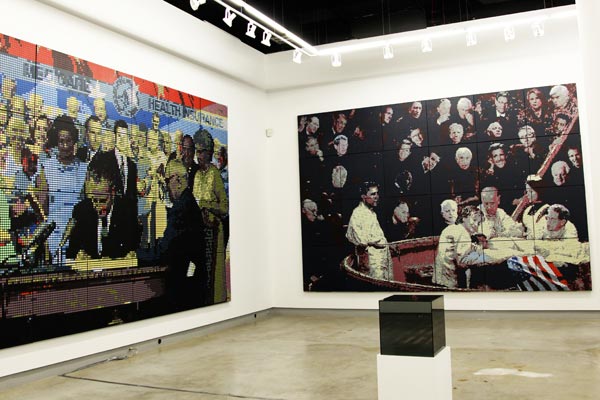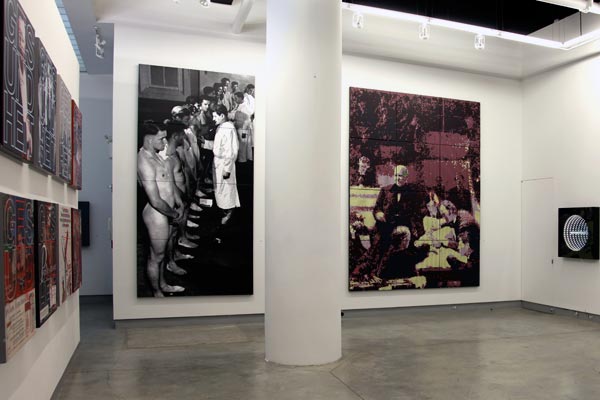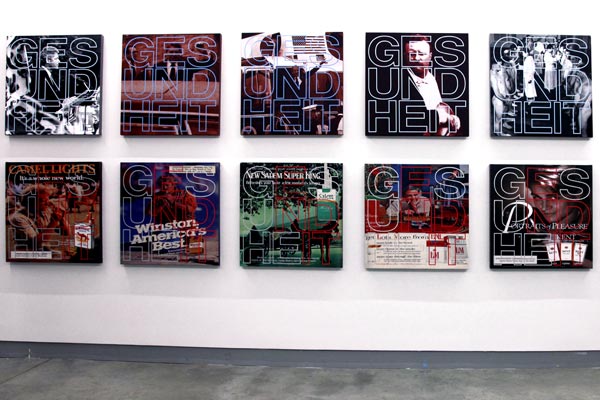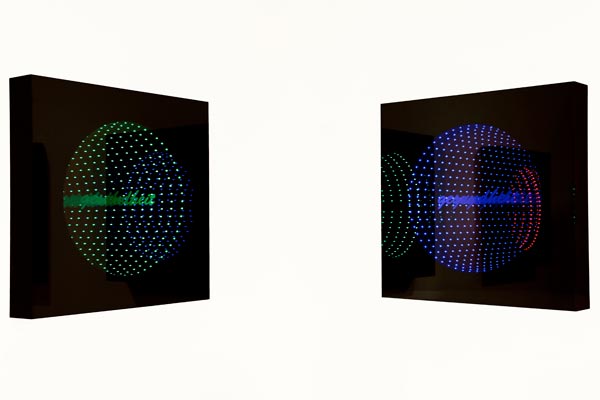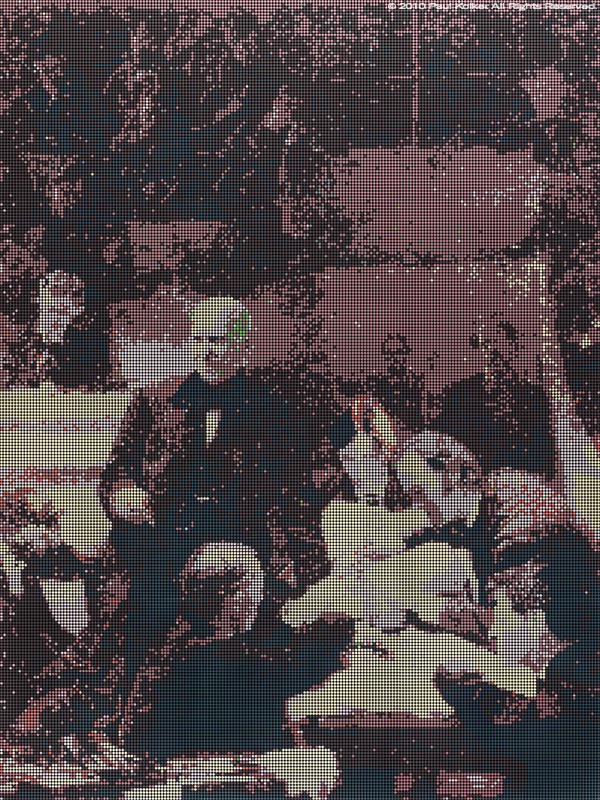
Kolker’s dot matrix canvases are iconic of our digital age of cell phone, computer and television screens. However, it is his style of painting which is distinguished and founded in a process, ‘fracolor’, based on a new fractal geometry of iterative processes and expansive effects. At first an image is fractionated and then restructured into a grid of dots. Colors are not mixed with each other, but only with black and/or white. With his unique, but restrictive, palette he creates an illusion of a dreamscape in tints and shades. When the black background of the grid is highlighted by unmixed colored dots, the Bezold effect is expansive into the depths of the painting. While painting the dots white, or a near white tint, the dramatic chiaroscuro effects are reminiscent of a bright light in a field of darkness. Kolker regularly uses light in his works; particularly in his light box sculptures called ‘fractal boxes’ as well as in his paintings with foreground luminosity and background darkness for focus and depth effects. Of course, such infatuation with and comfort under the lights is not unusual for an artist who is also a surgeon!
Like the composers of centuries ago whose orchestral compositions are recreated by the conductors and performing artists of today, Kolker, using photomontage, collage and his ‘fracolor’ process, has transformed and recreated paintings of those images from the past which comport with his vision of America’s journey towards ‘healthcare for all.’
In Public Option Redux (2010), acrylic on canvas, he revisits our only public healthcare option painted in the image of the signing of the Medicare and Medicaid Act of 1965
In The Obama Clinic (2010), acrylic on canvas, he transforms and renders anew the Thomas Eakins painting, The Agnew Clinic (1885), with President Obama operating on United States Healthcare and conducting a clinic on The Patient Protection and Affordable Care Act of 2010.
In The Kolker Clinic (2010), acrylic on canvas, Kolker transforms the recently restored Eakins’ masterpiece, The Gross Clinic (1875)- now exhibited at The Philadelphia Museum of Art – with new faces which are highlighted against a dreamscape palette of tints and shades; surrounded by a black grid of colored dots, to remind us that we now live in the digital age and are already back to the future. No longer is the narrative that of a new feat of surgery by Dr. Gross at The Jefferson Medical College surgical amphitheater of the pre-antibiotic era; open drainage and mechanical cleansing of a young man’s infected thighbone in order to avoid amputation and its resultant disabilities was indeed an historic moment in 1875 healthcare!
Kolker’s new narrative is: The Kolker Clinic is more than a case of first impression of a surgical procedure in the history of medicine. It is also more than the art historical timelessness of procedural chiaroscuro. It is about the substantive energy of light itself, necessary for that identical, critical and sensory, visual perception in the studio and gallery as well as in the examining and operating room. It is about spotlighting. It is about spotlighting art; it is about spotlighting healthcare. But, it is mainly about enlightenment; that metaphorical ‘light from above’ which shines on to the faces of Dr. Kolker and his team, enabling them with an enhanced, perhaps prophetic, vision for ‘healthcare for all.’
The artist, who celebrates his fiftieth year as a Doctor of Medicine, is a cardiothoracic surgeon and Fellow of the American College of Surgeons. He is also a lawyer, member of The American Health Lawyers Association and Fellow of the American College of Legal Medicine. Dr. Kolker has served as founding director of a provider owned healthcare insurance company for more than a decade and has experienced American healthcare from many perspectives and disciplines.
Paul Kolker: “Go Gesundheit!” – Opening September 29, 2010.

